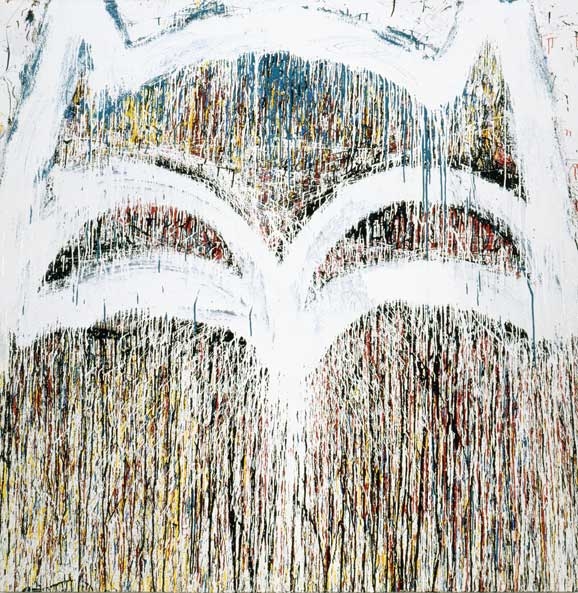The beginning of the 1990s was a hell of a moment for Joyce Pensato. That was when she started making paintings of the cartoon characters she had drawn with charcoal since the 1970s. Jettisoning the so-called abstract paintings she had been producing up to that point– large and literal territories of soiled oil paint peppered with holes punched through the canvas – Pensato took on bucketloads of black-and-white enamel and doubled down on her canvases. Fusing her paintings and drawings, she immediately transformed her enterprise into the wicked game it has been ever since, an achievement that would need another 20 years of voracious output to get the broader attention it deserves.
Fusing her paintings and drawings, she immediately transformed her enterprise into the wicked game it has been ever since
A lesser artist would likely have been more than satisfied with those earlier paintings (their distressed painterly qualities did have a certain something), but they didn’t stand a chance once Pensato shifted into overdrive and made ‘action painting’ count again. This exhibition, her first museum survey, demonstrates that she accomplished this and then some. Moreover, to have this survey also be her first solo exhibition in Los Angeles highlights the possibility that there is still a certain kind of painting that New York provokes best, and that Brooklyn-born-and-based Pensato has turned out to be – along with partner-in-crime Christopher Wool – one of a few painters capable of keeping the New York School relevant. If the recent retrospective at MoMA helped us realise that de Kooning was in on the joke of painting all along (he was neither ‘abstract’ nor ‘expressionist’, and mindful of earnestness as the enemy of painting), then Pensato’s survey should be seen as a successful presentation of why that joke still matters.
With hindsight, Batman Chair II (1976), one of the early drawings included in the show, is a perfect and ridiculous representation of the struggles of painting and drawing at the time (which were led by New Image Painting’s reinsertion of the recognisable image into the discourse of abstraction). Pensato’s superhero, a lifesize cardboard cutout, set the parameters for the character choices she’s made ever since. Using masked or masklike faces that only convey emotion in the extreme (starting with Mickey Mouse, Donald Duck and Felix the Cat, and continuing with the perfect targets of The Simpsons and South Park), they are impassive one moment and outrageous the next, depending on when the switch has been flipped. The switch in question is Pensato’s process; it is her command of her markmaking that enables her work to embody calm and fierceness all at once. Ricocheting her unmistakable touch against canvas, paper and, significantly, the wall itself (I found the outsize oval ‘eyes’ of Blinkies, 2013, which have been slapped onto the wall in the rear of the space next to the bathroom door, particularly effective), Pensato, like de Kooning, has taken on everything from popular culture to taste to the nature of expression itself. But far more importantly, she reminds us in no uncertain terms that it all comes down to claiming one’s space.
This review originally appeared in the September 2013 issue.
